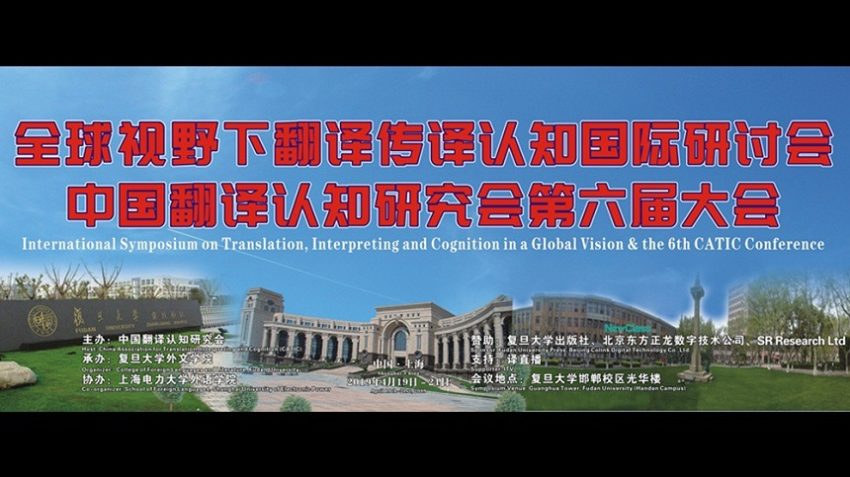Translation process research and the new construction of meaning-Arnt Lykke Jakobsen
人工智能时代口译技术应用研究
王华树 | 国内首部聚焦口译技术应用和教学的著作
新书推荐
口笔译教育与评价国际论坛 二号公告
在厦门大学百年校庆之际,邀您齐聚厦门、共襄盛举
论坛推荐

全球视野下翻译传译认知国际研讨会暨
中国翻译认知研究会第六届大会
☞点击回看大会全程直播盛况
主持人:李丽青教授
评议专家:詹成教授
Professor Arnt Lykke Jakobsen
Arnt Lykke Jakobsen, President of the European Society for Translation Studies (EST), is the Professor Emer. of Translation and Translation Technology at Copenhagen Business School (CBS). In 1995 he invented the keylog software program Translog. In 2005 he established CRITT, the CBS Center for Research and Innovation in Translation and Translation Technology, which he directed until his retirement at the end of 2013. His main focus of research has been on developing and exploiting a methodology for translation process research using keylogging and eyetracking. He was CETRA Chair Professor in 2014. In 2016 he was selected President of the European of Society for Translation Studies (EST).
Translation process research and the new construction of meaning
Translation process research (TPR) has been said to be in need of being reembedded in a new conceptual and methodological framework (Muñoz ed. 2016). The main reason for this is that meaning has been found or claimed to be ‘4EA’: embodied, embedded, enacted, extended, and affective. The further claim is that traditional TPR (Jakobsen 2017), using keylogging, eyetracking and retrospective think aloud in lab-oriented experiments, is unable to capture the complexity, concreteness and situatedness of this new construction of meaning. In the new construction, cognition and meaning are not only in our heads, but in our bodies or even in networks (Risku and Windhager 2013). The kind of translation that is done in a lab is artificial and ecologically invalid, it has been claimed. Real translation is best studies in professional translation workplaces (Ehrensberger-Dow et al 2015), and the best method to study translation here is by using anthropological field study methodology.
While much of this criticism carries considerable conviction, there is still much to be said in favour of experimental, process-oriented work. It is not yet clear how field-study methodology or actor network theory will enhance either our understanding of the dependence of human cognition on brain, body, environment, situation and technology, or will reveal how these factors impact on translators’ cognition and decision making.
A case will be made for claiming that translation exists in many places, is equally real in them all, should be studied in them all, and can be relevantly studied with an array of different methodologies.
References
Ehrensberger-Dow, M., Englund Dimitrova, B., Hubscher-Davidson, S., & Norberg, U. (Eds.) (2015)
Describing Cognitive Processes in Translation. Amsterdam/Philadelphia: Benjamins.
Jakobsen, A. L. (2017) Translation Process Research. In Schwieter, J. W. & Ferreira, A. (Eds.)
The Handbook of Translation and Cognition. Hoboken NJ: Wiley Blackwell, pp. 21-49.
Muñoz Martín, R. (Ed.) (2016). Reembedding Translation Process Studies. Amsterdam, The Netherlands/Philadelphia, PA: Benjamins.
Risku, H. and Windhager, F. (2013) Extended translation. A sociocognitive research agenda. Target 25 (1), 33-45.
 【双语讯飞】发布中国翻译认知研究会的相关通知,进行翻译、传译、认知及其跨学科研究的学术交流和成果分享!另外,作为面向广大英语学习者的新闻英语学习平台,推送包括“语言解说、读报知识、双语新闻”等内容,欢迎您的关注!
【双语讯飞】发布中国翻译认知研究会的相关通知,进行翻译、传译、认知及其跨学科研究的学术交流和成果分享!另外,作为面向广大英语学习者的新闻英语学习平台,推送包括“语言解说、读报知识、双语新闻”等内容,欢迎您的关注!
《2019 CATIC》专题栏目
相关推荐
★★★★★ 5/5





